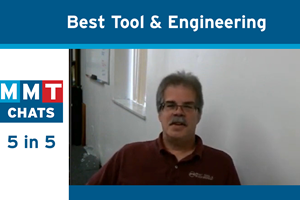Strategic Communications For Management
One of the 10 most valuable lessons I’ve learned about strategic communications in more than 20 years of work in law, government and issue management is this: “Assume the moral high ground early and make your opponent knock you off.” This means highlighting and communicating to key constituencies the elements of a business decision that are in accordance with public sentiments.
One of the 10 most valuable lessons I’ve learned about strategic communications in more than 20 years of work in law, government and issue management is this: “Assume the moral high ground early and make your opponent knock you off.” This means highlighting and communicating to key constituencies the elements of a business decision that are in accordance with public sentiments. Many corporate good deeds go unnoticed when they should be incorporated and promoted as part of a company’s brand image.
For example, if you replace old production machinery with new, energy-efficient models, then you have not only improved your business, but also have done something green for the community. Going green is an important and popular trend today. By upgrading the energy efficiency of your equipment, you are not only reducing energy costs for your business, but you are also using less energy, leading to reduced environmental impact by your electricity producer.
Or, if the new equipment provides enhanced safety features, then you have improved workplace safety for your workers. And, if you have begun to recycle manufacturing materials, mention it in communications to the community and industry. It’s another opportunity to highlight activities that appeal to public sentiment.
You are strengthening and inoculating your position against attacks by critics in a future public relations conflict. For instance, if an employee is accidentally injured at a company facility, the news media or a source of opposition may claim unjustly that the company has not given worker safety the attention it deserves. For this type of unfortunate accident, a company needs equity in the bank of public perception. In addition to the business being able to issue a swift and unqualified denial of this charge, a well-documented reputation for workplace safety will ensure key opinion makers in the community are already aware of your employee safety record.
Assuming the moral high ground is easier than you may think. Most executive and corporate actions contain strategic messaging value. The key is in looking at things from many different public perspectives to discover the subtle value to your public audience. One should be looking for opportunities where a publicly-valued behavior or practice also makes good business sense.
Consider this, for example: your company has replaced a hazardous chemical used in daily operations with a safer one. These upgrades are important to a number of public constituencies.
Obviously, the company has done something good for the environment: But good for the environment usually means also good for people. Removing a harsh chemical from the workplace eliminates immediate exposure to employees. Workers also may be protected from possible unknown long-term effects of the chemical. Who is the supplier of the new product? Is it a local source? If so, is there a way to convey to the public the value of collaborating with a local business to protect the health of workers?
Real-life technology improvements over the years have given the moldmaking industry some positive environmental messages that could be shared with the public. For example, laser technology can be used to texture molds and engrave cavities without the need for toxic fluids or additional materials. Lasers also save time and costs, great news for customers. Some water-based chemicals applied in moldmaking and metalworking can be filtered and reused. Small metal scraps also can be melted and recycled. Some companies capture and reuse even metallic dust. These are facts the public should know about the industry.
Past innovations have reduced the use of volatile organic compounds and other hazardous substances, such as phenols and formaldehyde used in making casting molds. Some new chemicals and techniques frequently result in shorter manufacturing cycle times and other efficiencies that are reducing costs.
Remember to communicate the positive aspects of standard industry operating procedures you may take for granted. For example, today’s public may be interested in a new chemical or manufacturing technique that reduces carbon emissions or eliminates ozone-depleting chemicals.
Even though you may have implemented a change to your business on the basis of improving profitability, look for every opportunity to assume the moral high ground.
Related Content
What is Scientific Maintenance? Part 2
Part two of this three-part series explains specific data that toolrooms must collect, analyze and use to truly advance to a scientific maintenance culture where you can measure real data and drive decisions.
Read MoreMMT Chats: 5 in 5 with Best Tool and Engineering
MoldMaking Technology Editorial Director Christina Fuges reveals 5 best practices for improving efficiencies within shops...in 5 minutes. Our guest is Joe Cherluck, President of Best Tool and Engineering in Clinton Township, Michigan. This episode is brought to you by ISCAR.
Read MoreQuestions and Considerations Before Sending Your Mold Out for Service
Communication is essential for proper polishing, hot runner manifold cleaning, mold repair, laser engraving and laser welding services.
Read MoreHands-on Workshop Teaches Mold Maintenance Process
Intensive workshop teaches the process of mold maintenance to help put an end to the firefighting culture of many toolrooms.
Read MoreRead Next
How to Use Strategic Planning Tools, Data to Manage the Human Side of Business
Q&A with Marion Wells, MMT EAB member and founder of Human Asset Management.
Read MoreHow to Use Continuing Education to Remain Competitive in Moldmaking
Continued training helps moldmakers make tooling decisions and properly use the latest cutting tool to efficiently machine high-quality molds.
Read MoreAre You a Moldmaker Considering 3D Printing? Consider the 3D Printing Workshop at NPE2024
Presentations will cover 3D printing for mold tooling, material innovation, product development, bridge production and full-scale, high-volume additive manufacturing.
Read More







.jpg;maxWidth=300;quality=90)

.png;maxWidth=300;quality=90)



_300x250 4.png;maxWidth=300;quality=90)











.jpg;maxWidth=970;quality=90)